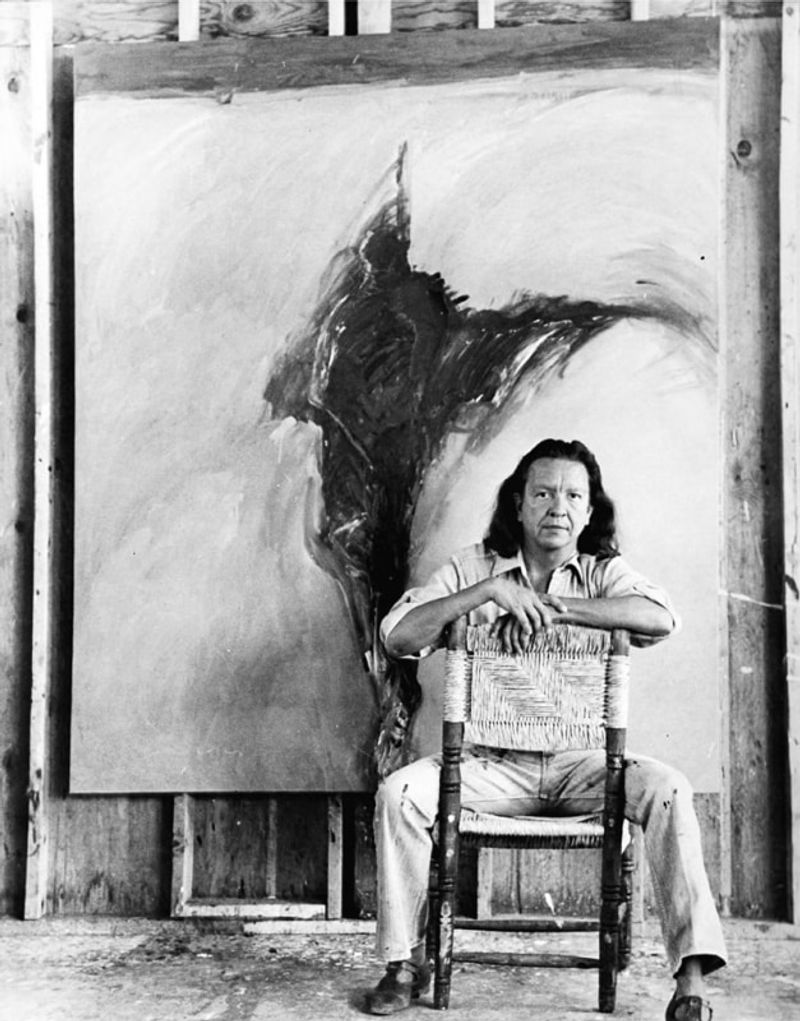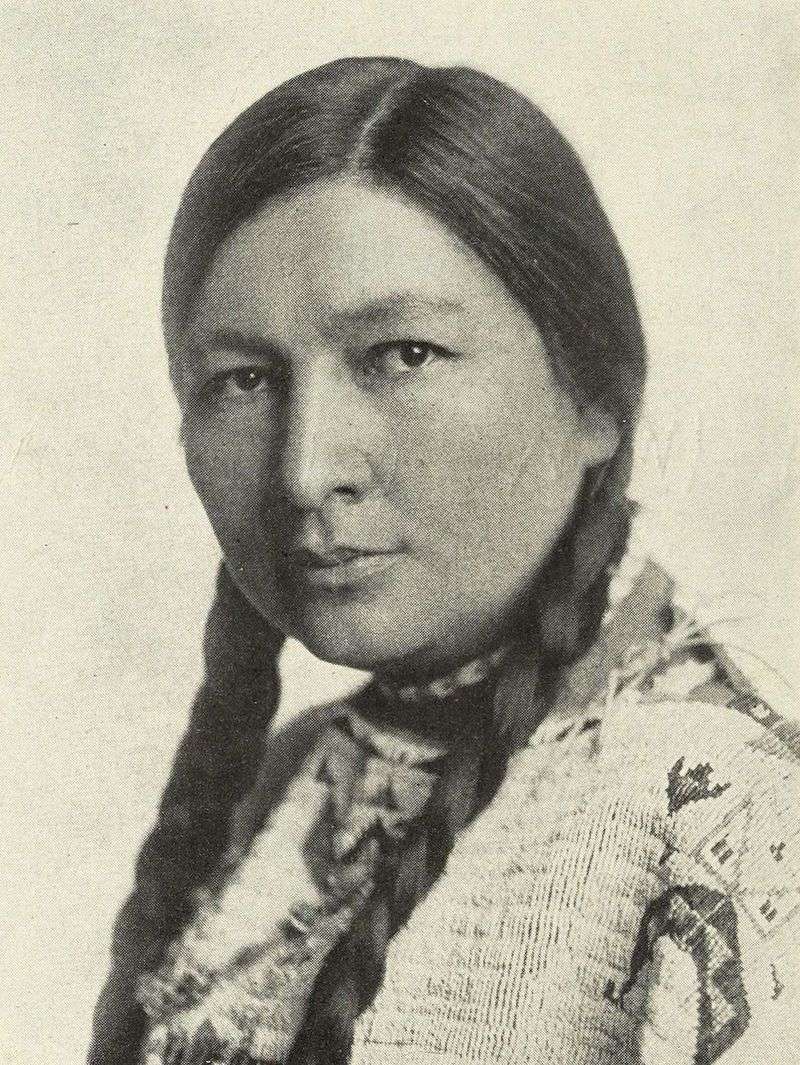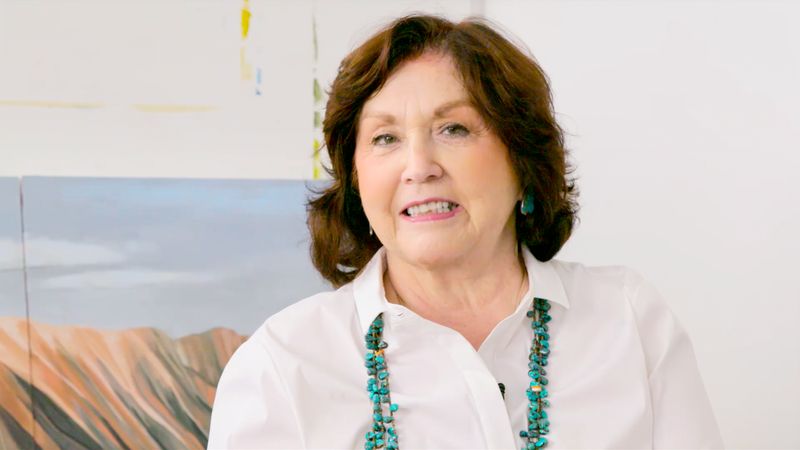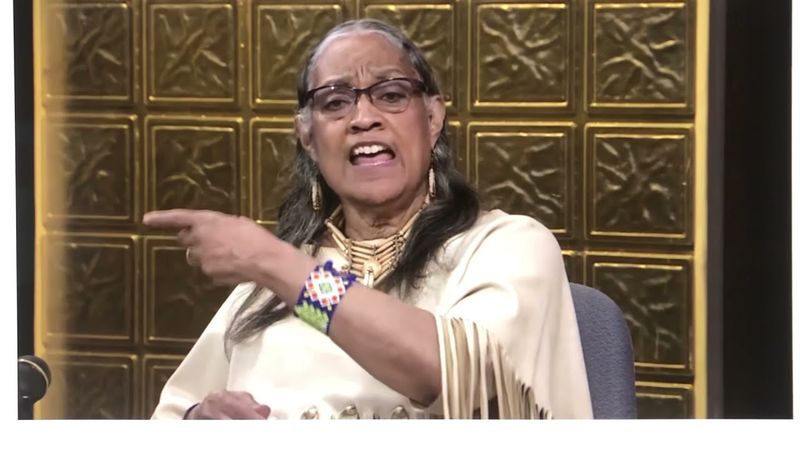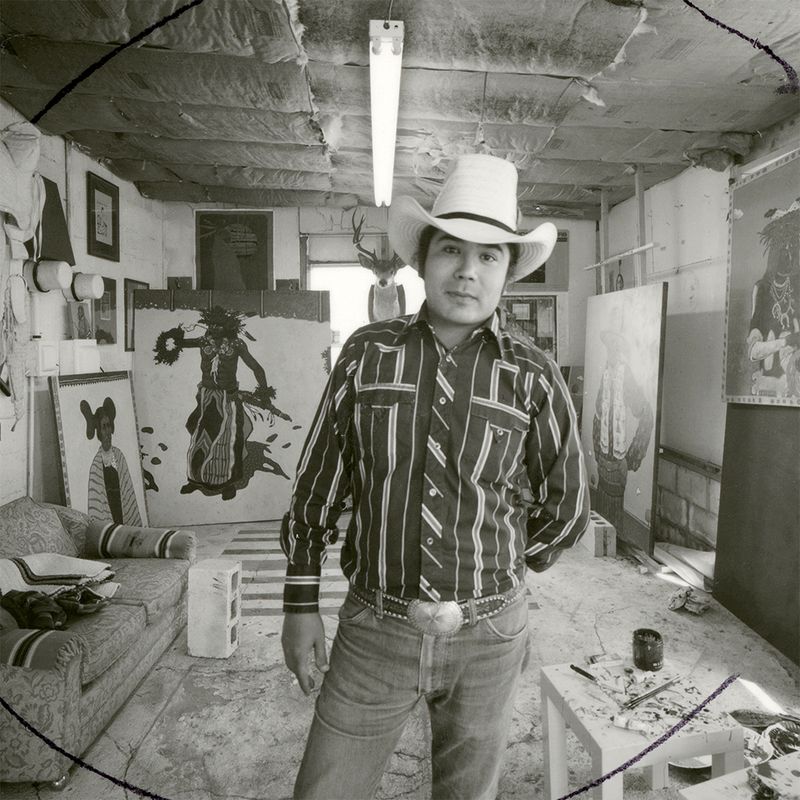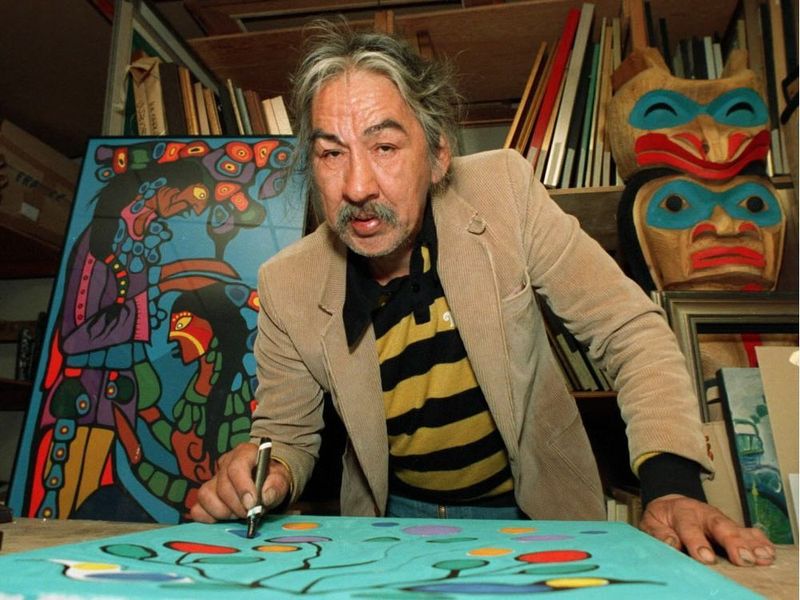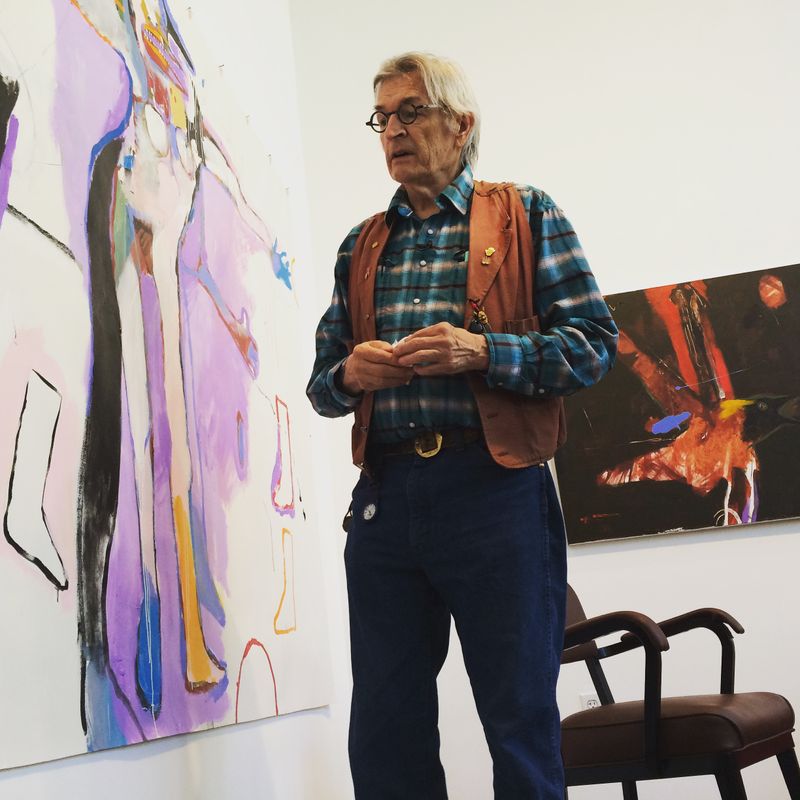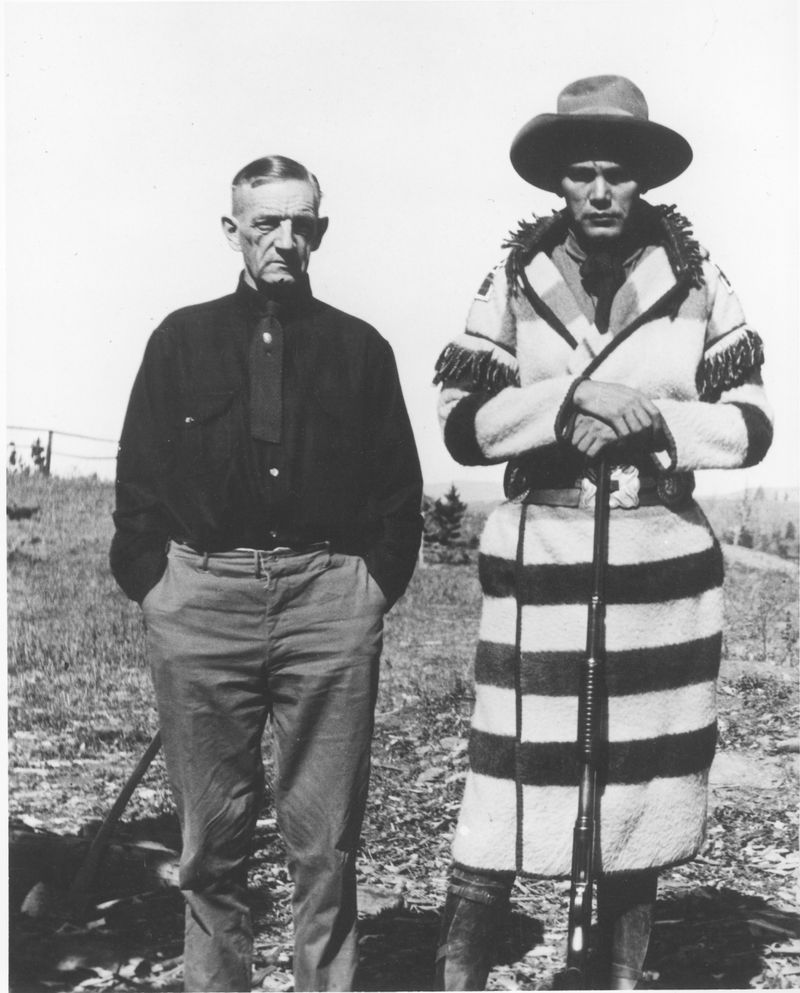The world of art has been profoundly shaped by Native American artists who have not only introduced unique styles and perspectives but have also challenged prevailing narratives and stereotypes.
This list celebrates 12 remarkable Native American artists who have made indelible marks on American culture.
1. Jaune Quick-to-See Smith
Jaune Quick-to-See Smith has been a transformative figure in the art world, uniquely blending abstract expressionism with Indigenous symbolism. Her work challenges stereotypes and bravely addresses political and environmental issues. Born into the Confederated Salish and Kootenai Tribes, Smith uses her art as a vehicle for social commentary, merging traditional Native themes with contemporary issues. Her paintings serve as a bridge between cultures, urging viewers to reconsider their perspectives. Each piece resonates with a powerful message, leaving an indelible impact on American culture and beyond.
2. Fritz Scholder
An innovator in modern art, Fritz Scholder revolutionized the portrayal of Native Americans. Through his bold and ironic approach, he challenged romanticized depictions, blending iconic imagery with modern art techniques. A member of the Luiseño tribe, Scholder’s work often confronted uncomfortable truths, sparking dialogue and reflection. His unique style, characterized by vibrant colors and striking contrasts, resonated with audiences, redefining Native American art. His influence extended beyond the canvas, inspiring a new generation of artists to explore and express their complex identities.
3. Wendy Red Star
With a multidisciplinary approach, Wendy Red Star explores themes of Native identity, colonial history, and feminism. A member of the Apsáalooke (Crow) tribe, Red Star’s work combines photography, installation, and performance to challenge historical narratives. Her art invites viewers to engage with overlooked stories and perspectives, often incorporating humor and irony. Through her vivid and thought-provoking pieces, Red Star has become a prominent voice, reshaping the understanding of Native culture in contemporary America.
4. Pablita Velarde
Pablita Velarde stands as a pioneering figure among Native American female artists. As one of the first female Pueblo painters, she created captivating “earth paintings” using natural pigments. Her art documented traditional Pueblo life, preserving the customs and stories of her people. Velarde’s work offers a window into a rich cultural heritage, inviting viewers to explore the beauty and complexity of Pueblo traditions. Her contribution to art and cultural preservation remains invaluable, inspiring future generations to embrace their roots.
5. Zitkala-Ša (Gertrude Simmons Bonnin)
A multifaceted talent, Zitkala-Ša was an early 20th-century writer, musician, and activist. Known for co-writing the first Native American opera, she also championed Indigenous civil rights and cultural preservation. Her work often highlighted the struggles and resilience of Native peoples, blending traditional stories with contemporary themes. As a member of the Yankton Dakota tribe, Zitkala-Ša’s legacy is one of courage and creativity, leaving an enduring impact on both the arts and Indigenous activism.
6. Kay WalkingStick
Kay WalkingStick is celebrated for her abstract landscapes that eloquently merge Native American symbolism with themes of identity and historical trauma. A member of the Cherokee Nation, her art reflects a deep connection to her heritage while exploring universal human experiences. WalkingStick’s work often juxtaposes traditional and modern elements, offering a unique visual narrative that resonates with diverse audiences. Her contribution to contemporary art is marked by a profound exploration of memory and identity, inspiring viewers to reflect on their own journeys.
7. Rose Powhatan
Rose Powhatan is a distinguished artist, educator, and museum founder whose work elevates Native voices and preserves Indigenous heritage. A member of the Pamunkey/Tauxenent tribes, Powhatan uses mixed media and storytelling to celebrate the rich history of her people. Her educational initiatives and art projects have empowered communities and fostered greater understanding and appreciation of Native cultures. Through her creative endeavors, Powhatan continues to inspire future generations to embrace their cultural identity with pride.
8. T.C. Cannon
T.C. Cannon was a trailblazing artist whose vibrant and politically charged works addressed themes of Native empowerment and cultural duality. A member of the Kiowa/Caddo tribes, Cannon’s art challenged conventional narratives and celebrated Indigenous identity. His bold use of color and symbolism conveyed powerful messages, resonating with audiences far and wide. Cannon’s legacy continues to influence contemporary Native artists, encouraging them to express their unique perspectives and stories with authenticity and courage.
9. Norval Morrisseau
Norval Morrisseau, often hailed as the “Picasso of the North,” founded the Woodland School of Art, introducing Indigenous spirituality and cosmology to the global art world. An Ojibwe artist, Morrisseau’s work is characterized by vibrant colors and symbolic imagery. His paintings often depicted spiritual themes, connecting deeply with both Native and non-Native audiences. Morrisseau’s innovative style and profound storytelling have left an enduring legacy, paving the way for future generations of Indigenous artists to share their narratives.
10. Allan Houser
Allan Houser is one of the most celebrated Native sculptors of the 20th century, renowned for his bronze sculptures that honor Indigenous strength and serenity. A member of the Chiricahua Apache tribe, Houser’s work transcends cultural boundaries, resonating with audiences worldwide. His sculptures often depict powerful figures and serene landscapes, capturing the essence of Native resilience and tranquility. Houser’s legacy remains a testament to the enduring power of art to celebrate and preserve cultural heritage.
11. Rick Bartow
Rick Bartow was a gifted painter and sculptor whose expressionistic works drew on Native mythology, personal trauma, and healing. A member of the Wiyot Tribe, Bartow’s art was deeply personal and emotionally resonant. His pieces often explored themes of transformation and resilience, inviting viewers to engage with the complexities of the human experience. Bartow’s unique voice and artistic vision have left a lasting impact on the art world, inspiring others to explore their own stories of struggle and triumph.
12. Hart Merriam Schultz (Lone Wolf)
Hart Merriam Schultz, known as Lone Wolf, was among the first Native American artists to gain national recognition. A member of the Blackfeet tribe, Schultz’s paintings and sculptures helped preserve images of traditional life on the Plains. His work offered a glimpse into the everyday lives and cultural practices of his people, fostering a greater understanding and appreciation of Native heritage. Schultz’s contribution to American art continues to be celebrated, inspiring future generations to embrace their cultural identity and share their stories.


